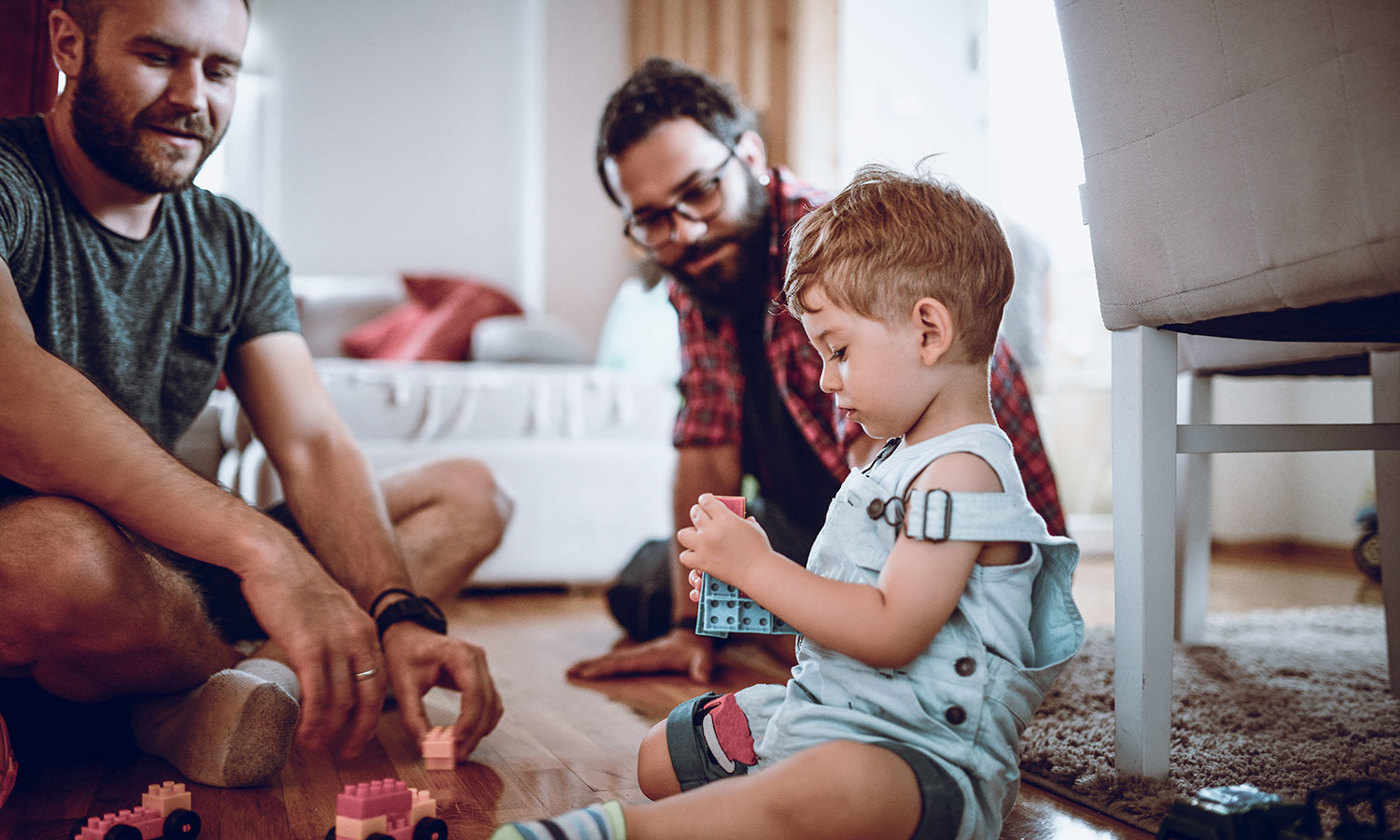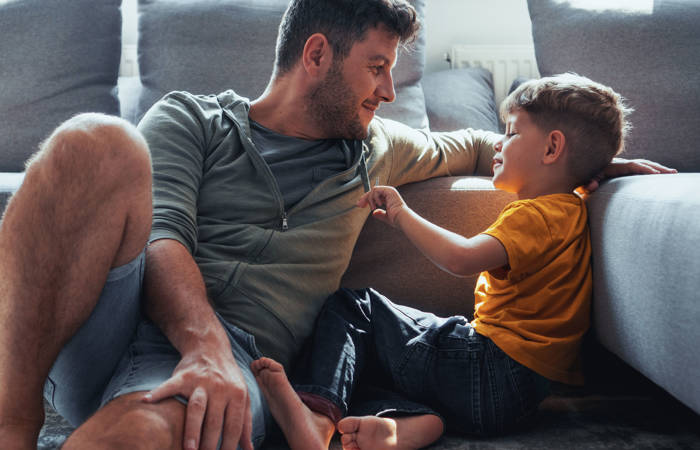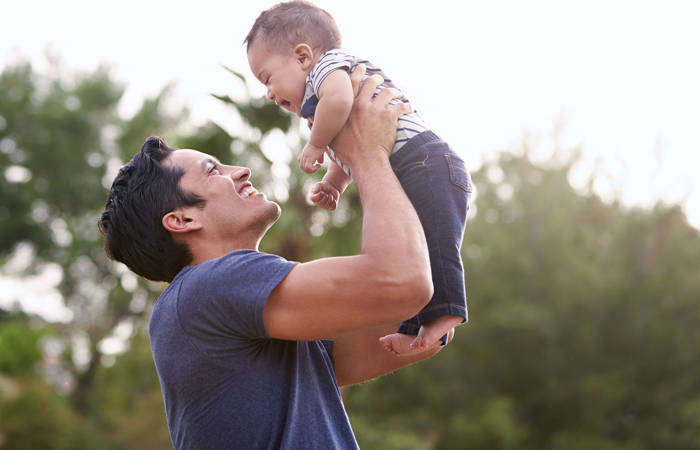Like what you see?
Sign up to receive more free parenting advice.
Thank you for subscribing to our newsletter!
Early Learning

Credit: iStock.com/Rawpixel
Most parents are understandably excited when their child first starts to speak. Many also know that one of the best ways to help their child’s language development is to talk to them as much as possible from day one, about almost anything. But how else can parents help their child’s language skills develop?
David Loyst has been studying and teaching about parenting for over 30 years as a speech language pathologist, autism consultant, and parent coach. He says it helps to think not just about language development, but ‘expressive’ language development.
Stimulating Language Development
For David, stimulating language in an infant or a child always starts with the same approach.
“I follow their lead and find out what they are interested in. Then I start talking about that. A lot! I might say: ‘Oh, wow. There’s a dog. Did you see that dog? He was barking. That dog was barking.’ So I've said the word dog several times,” he says.
David’s deliberate use of language goes beyond repetition. He also avoids too many ‘What’s that?’ questions.
“You're not teaching a kid when you repeat, ‘What's that? What's that?’. You're testing a child,” David says.
Instead, he focuses on statements that repeat key words, helping them to build a vocabulary of feelings from early on.
“In the dog example I might add, ‘You were scared of the dog, right?’ I build a vocabulary of feelings because young kids have emotions, but they don't have names of feelings,” David says.
One of the most useful tips for helping develop language is the ‘plus one’ concept.
“If I have a two-year-old child that has two word utterances, I'll mostly model three word utterances. If they say ‘more juice’, I'll say ‘Yes, more apple juice’, or ‘Apple juice is good’ or ‘It's cold apple juice’. I’m saying apple juice repetitively but I’m adding just a little bit,” David says.
He does the same with commands, by adding just one more step each time.
“If I say, ‘get your coat’ or ‘get your shoes on’ then the next time I might say, ‘Get your shoes on. Where's your coat?’ I want to see if they can understand a little bit more through one extra command. I'm always watching,” he says.
The key to the plus one approach, says David, is to think of language development like a high jump.
“If the bar is too high and you crash into it all the time then you don't want to do it anymore. If I’m a child and my parents are talking to me but giving me 70,000 commands that I cannot follow, I tune them out because I am continually jumping into the bar. But if the bar is too low, then you're not enabling me,” David says.
It’s a concept of development David says also works beyond language. He’s also noted that ‘snowplough parents’ (a term from his native Canada referring to parents who constantly move obstacles out of the way of their children) aren’t good at it.
“Those parents are setting the bar too low. You want to be mindful of where to set the bar, set it where they can jump, let them jump over it a few times and then lift it up,” he says.
If I’m a child and my parents are talking to me but giving me 70,000 commands that I cannot follow, I tune them out because I am continually jumping into the bar. But if the bar is too low, then you're not enabling me.David Loyst
Stay up to date with the latest news and articles from First Five Years
Thank you for subscribing to our newsletter!
How play influences language development
The way our children play gives away a lot about their social and emotional development, but it also provides excellent opportunities for developing language skills. This is particularly interesting in preschoolers, who are not only sequencing words but working towards complex sentences.
“These are two sentences joined by a word, such as: ‘If you do this, then I'll do that.’ You start to see negotiation in there,” David says.
In this age group parents can also observe narrative play, where storytelling is part of the play.
“A child might say: ‘Okay, I'll be the dog.’ Or ‘No, you were the dog yesterday.’ Then it moves to ‘Okay. You be the dog, but I'm going to have the red leash and we're going to go for a walk.’” says David.
“The play becomes an improvisation that goes back and forth, and children have to change what they are to do based on what the other child is going to do. It's not a script and it’s quite different to how two to three-year-olds use language in play. For them it’s just the facts: ‘You put the pizza in the microwave oven.’ Then ‘You take it out, you cut it up, or you put it on a plate.’”
Language use in stressful times
As parents know, our children’s social and emotional development is developing rapidly in their first five years. But we don’t always realise how innately our emotional development is tied to our use of language.
“We tend to think that when a child knows words, they would use words. But what would happen if your mum was just run over by a truck, and I said, ‘Can we talk about your mortgage?’ You would have no words. And that's the experience of a preschooler and an early school aged kid if stressful things happen. It's not that they don't have the words, it’s that they can't access the words because they're in their limbic system, their emotional system,” he says.
Despite language being word focused, David says that when words aren’t working, it can help to use our face.
“Sometimes when I want to get their attention I will use my face because my face can be as serious as a heart attack. My son’s name is Ben and I did this a lot with him. ‘Ben’, I would say in my big voice, and he would stop what he was doing. He'd look at me and I wouldn't say anything. I would teach him non-verbal language, which was me pointing to his shoes and looking back at him with very serious eyes. And then he would get his shoes on.
“Sometimes using nonverbal communication can be much more effective, especially if you have children who have difficulties dividing their attention,” David says.







